This is the most common way of expanding a home network, by providing more wired ethernet connections to connect devices with. This is great if you find that the standard 4 ethernet ports on the back of a Wi-Fi router are not enough, and you want to connect up more devices by LAN cable. But how exactly do you do this?
In this guide, we’ll show you the easy, step by step illustrated process to connect your modem to your router, and then the router to a switch, to open up your home network with many more potential ethernet connections than you would have using just a modem and router.
Let’s get started!
Cables You’ll Need
To configure a modem to router to switch setup on a home network, you’ll need to two main types of cable – an RJ-11 cable and an RJ-45 ethernet cable. They both look very similar so let’s distinguish them.
1. RJ-11 (phone line) cable – Most often looks like a thin cable with a small square pin connector at the end (smaller and squarer than an ethernet connector).
You’ll need at least one of these:
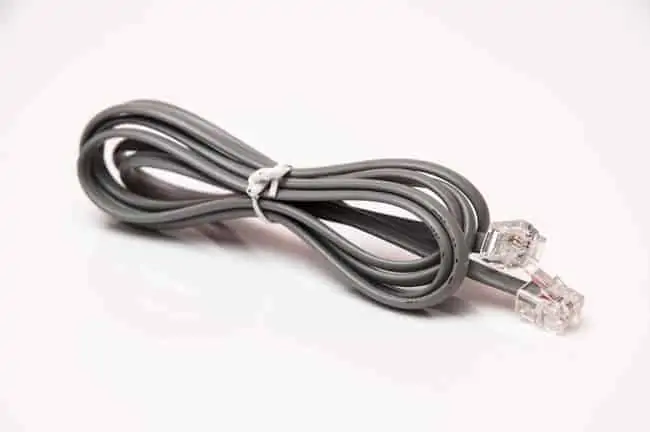
This is what connects your standalone router, or combined router-modem, to the phone line to provide your internet service. One end goes into the RJ-11 port on your modem/router-modem, and the other end goes into the phone line, or into an intermediary signal filter that then goes to the phone line.
2. RJ-45 Ethernet cable – Looks very similar to the RJ-11, but has a larger, more rectangular connector pin at the end.
You’ll need at least two of these:
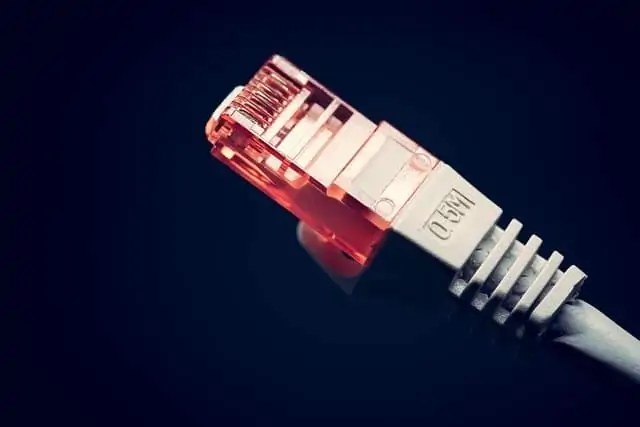
One of these connects the modem to the router (if they are separate), and the other connects your router to the switch. You then also need more ethernet cables to connect individual devices to the switch.
Step #1 – Connect Your Modem To The Phone Line With an RJ-11 Cable
Most readers probably know this step, but we’ll include it anyway, in case some users are literally configuring their home network from scratch.
To get online in the home, you need a couple of things:
- An installed and activated internet service from an ISP (eg. Comcast)
- A modem and router, either separate or combined into one.
Once you’ve got this, all you need to do is connect your modem, or modem-router combo, to the phone line, with your RJ-11 phone line cable.
One end goes into the RJ-11 port (often called the Internet/Fiber/DSL/ADSL port) on the back of the standalone modem or combined router-modem:
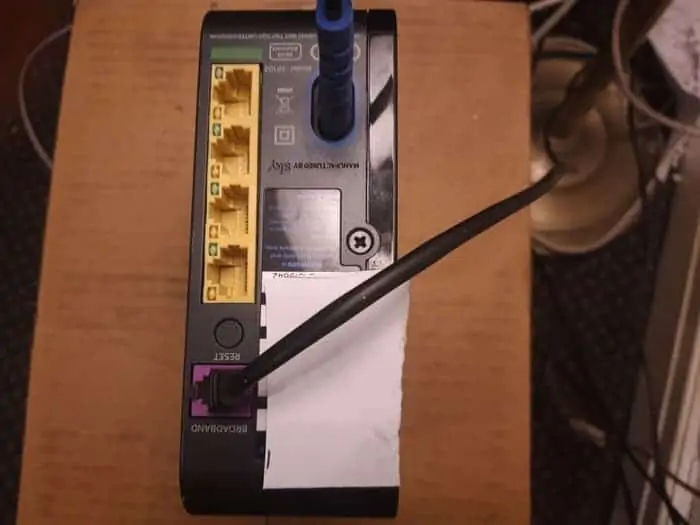
……and the other goes either directly into the phone line socket, or into an intermediary filter instead, which then goes out to the phone line.
Here’s how mine is set up:
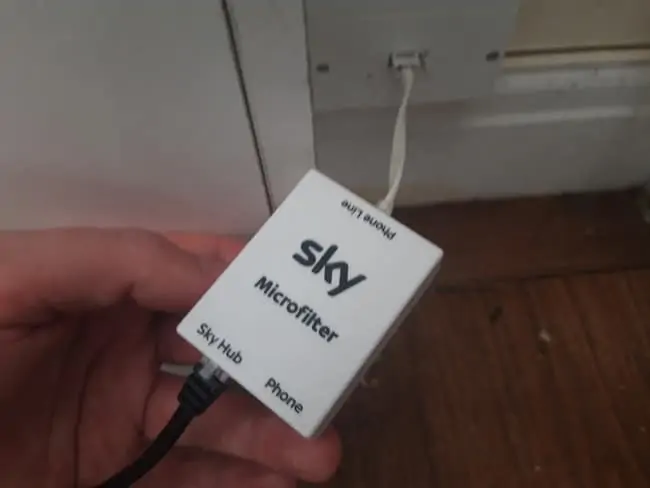
Make sure this is all connected up and your internet service is activated and ready to go. If the internet light on your modem/router is orange, see our guide for help.
Step #2 – Connect Your Modem To Your Router With An RJ-45 Cable
If you have a combined modem-router setup, like mine pictured above, then you can skip to Step #3.
If you’ve got an older setup though, the modem and router are still separate, then they will need connecting:
Modem on left; router on right
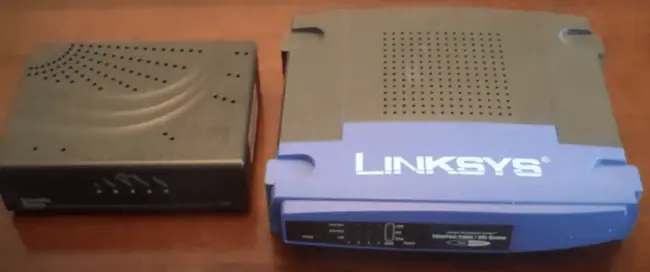
This is easy; you just get one of your RJ-45 ethernet cables (the ones with the bigger rectangle connectors on the end) and connect one end to the RJ-45 port on the router (often called the WAN/Internet port on standalone routers):
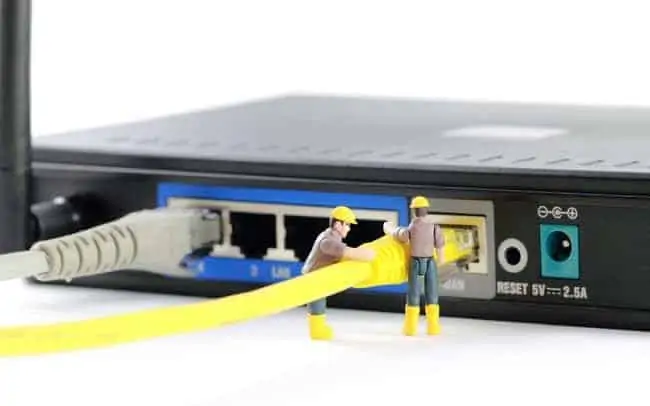
To do this properly, the ethernet cable must go into the separate WAN/Internet port, NOT one of the 4 LAN ports.
It’s easy to distinguish though on most routers – the 4 LAN ports are grouped together and are one color, whereas the WAN/Internet/DSL port is usually off to the side on it’s own and often a different color and clearly marked. See here if you need help on this.
But a standalone modem must always be connected by ethernet to the router’s WAN port, not one of the 4 ethernet LAN ports.
Then connect the other end to the RJ-45 ethernet port on the modem:
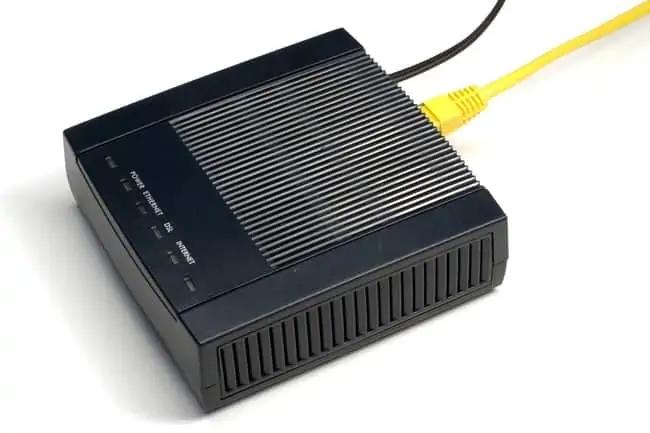
Your modem and router are now connected, and you just need to connect the switch up to the router to complete the setup!
Step #3 – Connect Your Router To Your Switch With an RJ-45 Cable
The setup we’ve got so far is what most households use – your device connects to the one (or two) Wi-Fi networks the router is broadcasting, or plug via ethernet cable into one of the 4 LAN ports on the back.
However, by connecting a switch to one of the router’s ports, you open up a lot more potential wired connections, since the switch itself will have anything from 4 to 16 or more additional LAN ports.
Here’s what you do here:
Grab your second RJ-45 ethernet cable, and plug it into any one of the 4 LAN ports on the router (your WAN/Internet port should already be taken up by the modem connection):
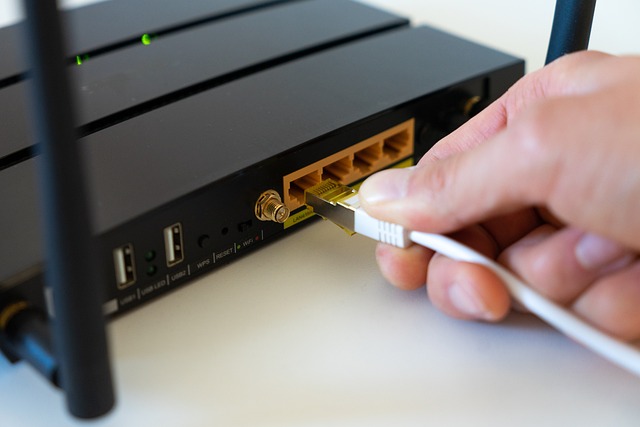
Then plug the other end into ANY port on the back of your switch (it doesn’t matter which port here):
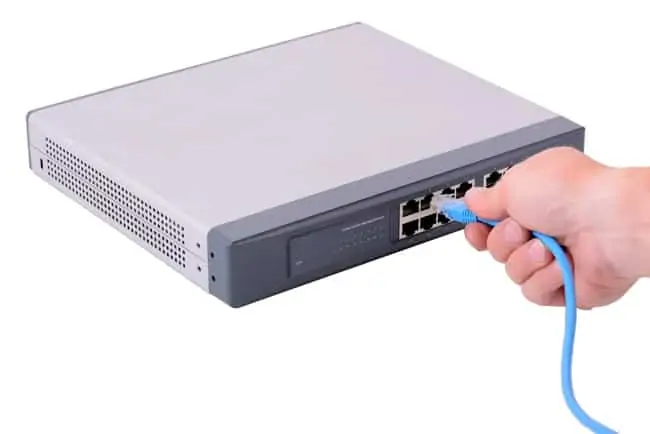
You’ve now successfully added the switch to the home network!
Step #4 – Connect Additional Devices To Your Switch
Once the switch is connected to the router, and the router to the modem, you can then plug any additional devices you like into any of the switch’s LAN ports, and these devices will be able to access the internet just as if they were plugged into the router ports instead.
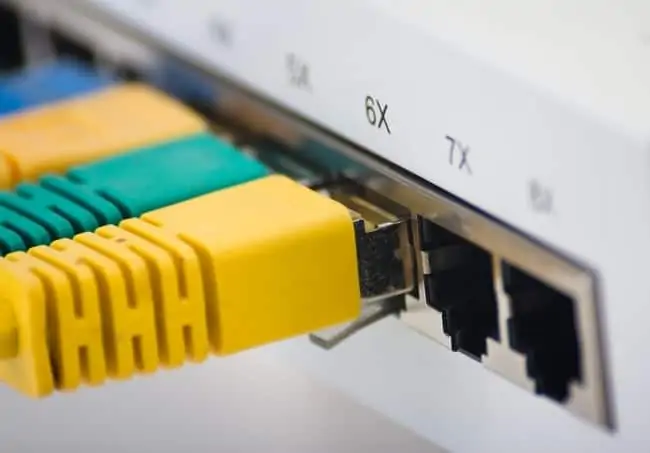
Switches are data forwarding devices that will handle the transfer of data back between the router and itself, making sure the right data goes to the right devices. Therefore they can complement and supplement routers on a home network, but they need routers to function, since routers do things switches cannot, like assign IP addresses (see here).
Why Add a Switch To A Home Network?
We briefly alluded to the main reason why users add switches to home networks – to add more wired ethernet access points to the network; to plug more devices in by network cable if needed.
Remember that most standard Wi-Fi routers only provide 4 ethernet/LAN ports; if you need to plug in any more, you are out of luck on most routers.
Obviously many more devices can connect by Wi-Fi, but this isn’t always the best option for users who need a strong connection and low latency (gamers) or high bandwidth (streamers). Wi-Fi is often slower than ethernet so it’s preferable to go wired when possible (see here).
Therefore switches open up the potential for more than 4 wired LAN connections on the home network if they are needed. See our article on the different options open to you if you’ve run out of ethernet ports on your router, with switches and other alternatives discussed.
Can You Connect a Modem to a Switch then to a Router?
As well as Modem–Router–Switch, this phrase is sometimes searched as “modem to switch to router”. In most cases, they probably really meant what we’ve already covered, but let’s also briefly clear up whether this combination is possible:
It is not possible to connect a modem to a switch, and then to a router, and get a network to function. The correct order of setup is to connect a modem to a router, then connect the router to a switch. Routers are required to assign IP addresses and decode data coming in from the modem and wider internet, before a switch can become useful on a home network.
In other words, the order that you connect these devices together is important – the modem is connected to the phone line, and router is connected to the modem (if separate), and then the switch is connected to the router. This is the correct order. Then individual devices on the network can either connect to the router, or the switch’s LAN ports, to get online.